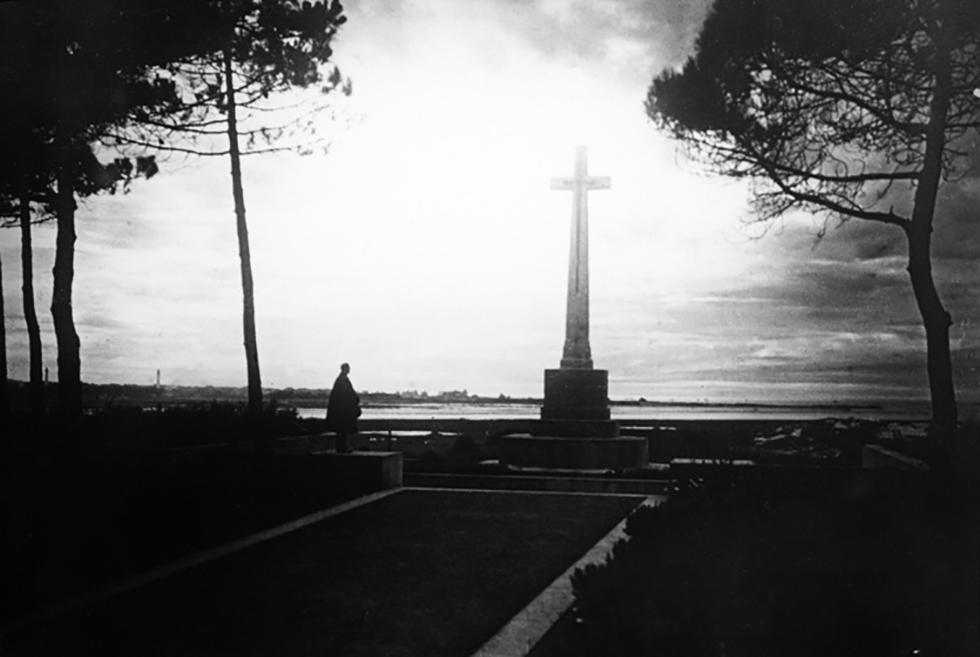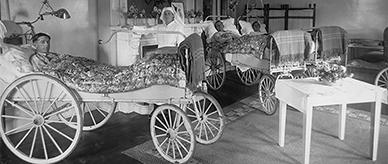


About this record
This is a black-and-white photograph of part of the Etaples Military Cemetery in northern France, taken in the 1920s. The large Cross of Sacrifice and trees either side of it are silhouetted against a cloudy sky as the sun rises over the Canche River estuary. A person stands looking towards the cross.
Educational value
- This photograph reflects the significance of British Commonwealth war cemeteries and memorials in commemorating the sacrifice of those who died serving their countries during the First World War (1914–18). The Etaples Military Cemetery is one of many managed by the Commonwealth War Graves Commission (CWGC) and is shown here some years after it was created following the armistice.
- The Imperial War Graves Commission, forerunner of the CWGC was established prior to the cessation of hostilities to deal with the hundreds of thousands of Commonwealth war dead. Architects and designers were summoned to develop a consistent approach to honouring the dead. Teams spent many years recording the names, locations and dates of those killed in the fighting. Etaples Military Cemetery was one of the first to be built by the Imperial War Graves Commission.
- The British Commonwealth soldiers interred at Etaples Military Cemetery were brought from the length of the Western Front, where trench warfare killed millions on both sides through bombardment or near-suicidal charges across the strip of land between the opposing forces known as 'No Man's Land'. Commonwealth forces, including those of Australia, suffered heavy casualties, particularly at Fromelles, Bullecourt, Messines and Passchendaele.
- There were large concentrations of Commonwealth reinforcement troops and hospitals in the Etaples region during the First World War (WW1). There were 16 hospitals and a convalescent centre that could cater for 22,000 sick or wounded soldiers. Australians were among the Commonwealth forces that were engaged in protracted trench warfare against German forces along the Western Front through Belgium and north-eastern France.
- The CWGC cares for the graves and memorials of almost 1.7 million servicemen and women from member countries of the Commonwealth, including Australia, who died in WW1 and the Second World War (1939–45). CWGC funding is provided by Commonwealth member governments in proportion to the number of graves. Britain contributes 78 per cent, Canada 10 per cent and Australia 6 per cent.
- Commonwealth forces lost almost 1 million men during WW1, most on the Western Front. More than 290,000 Australians served there, with a total of 46,000 either killed in action or dying from their wounds. Along with Gallipoli in Turkey, the Western Front battlefields of France and Belgium are popular places of pilgrimage today. Western Front tours incorporate locations that were the scenes of Australian tragedies and triumphs.
Acknowledgments
Learning resource text © Education Services Australia Limited and the National Archives of Australia 2010.
Related themes
Need help with your research?
Learn how to interpret primary sources, use our collection and more.



